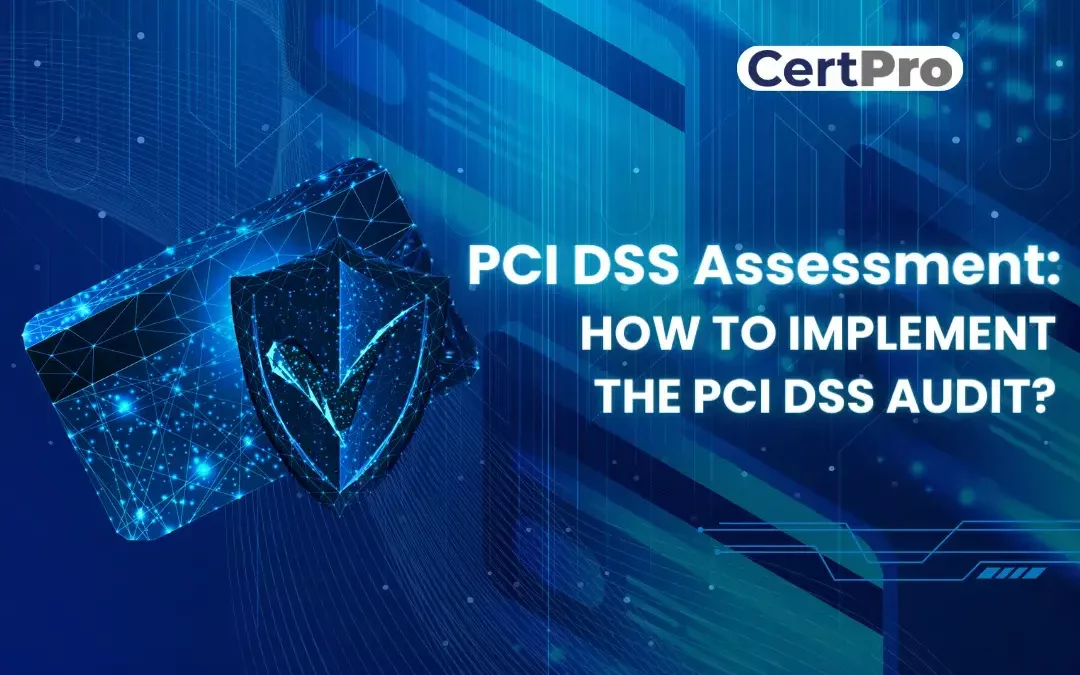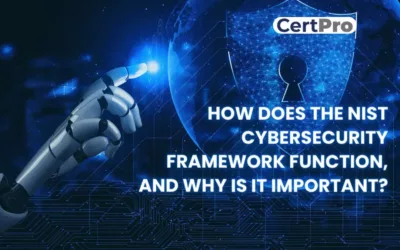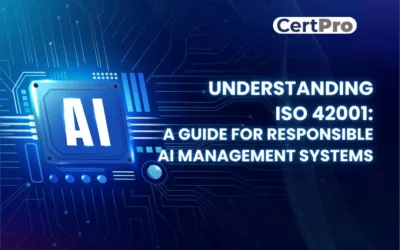In a world where online transactions are occurring at a high pace, it’s important to note that these transactions rely on trust. Protecting cardholder data is vital for maintaining that trust. The Payment Card Industry Data Security Standard (PCI DSS) applies to organizations dealing with credit card transactions or processing transmitted credit card information. However, steering through a PCI DSS assessment can be overwhelming. The PCI DSS plays a significant role in protecting personal information. Therefore, the standard works together to secure client details during digital transactions. However, steering through a PCI DSS assessment can be overwhelming for you.
But fear not! We have this guide equipped for you, simplifying the process by laying out the 5 crucial steps to consider for a successful PCI DSS assessment. Following these steps, you will be on your way to achieving a practical PCI DSS audit and ensuring the utmost security for your valuable clients.
WHAT IS PCI DSS ASSESSMENT?
PCI DSS is a set policy for maintaining the security aspects of credit and debit card holders and cash transactions. It works against the misuse of personal data. PCI DSS can prevent the risk of cybersecurity breaches of sensitive data and reduce the risk of fraud related to payments and transactions. PCI DSS assessment is not a law or legal regulatory assessment; however, it is necessary for businesses working with credit, debit, and other transaction-related data. The main aim is to ensure customer security from the service provider’s end.
Furthermore, PCI DSS is about more than just meeting regulatory requirements. It is about securing sensitive cardholder data from cyber threats. You are legally liable to pay for the consequences if your organization fails to meet the requirements or violates the standard. Thus, it can cause financial penalties and reputational damages.
HOW DOES PCI DSS ASSESSMENT MATTER TO YOUR BUSINESS?
A data breach can have extreme consequences for your organization. There are several reasons why you need PCI compliance. Let’s look at the key components that make your business credible.
1. Protecting Cardholder’s Data: PCI DSS assessment ensures that your organization has implemented substantial security measures in handling sensitive data. Hence, it provides security for credit card numbers, cardholder names, and expiration dates. This protects the cardholders’ financial details and builds the customers’ trust in your business.
2. Boosting Customer Trust: Therefore, compliance with the PCI DSS audit illustrates a commitment to a robust security system. It builds a foundation for customer trust. Thus, it increases the customer’s confidence. When their payment information is handled securely, they are more likely to transact with confidence. This will strengthen the customer relationship with your brand.
3. Reducing Risk of Data Breach: Implementing comprehensive security reduces the risk of data breaches. Henceforth, it incorporates regular PCI DSS assessments, strong passwords, and secure network configurations. This approach helps your business avoid the substantial costs and reputational damages related to data breaches.
4. Improved Security Posture: PCI DSS practices strengthen your organization’s security posture. The implemented security controls secure cardholder data and protect other sensitive information your organization might handle. This will instill a strong culture of security within your organization.
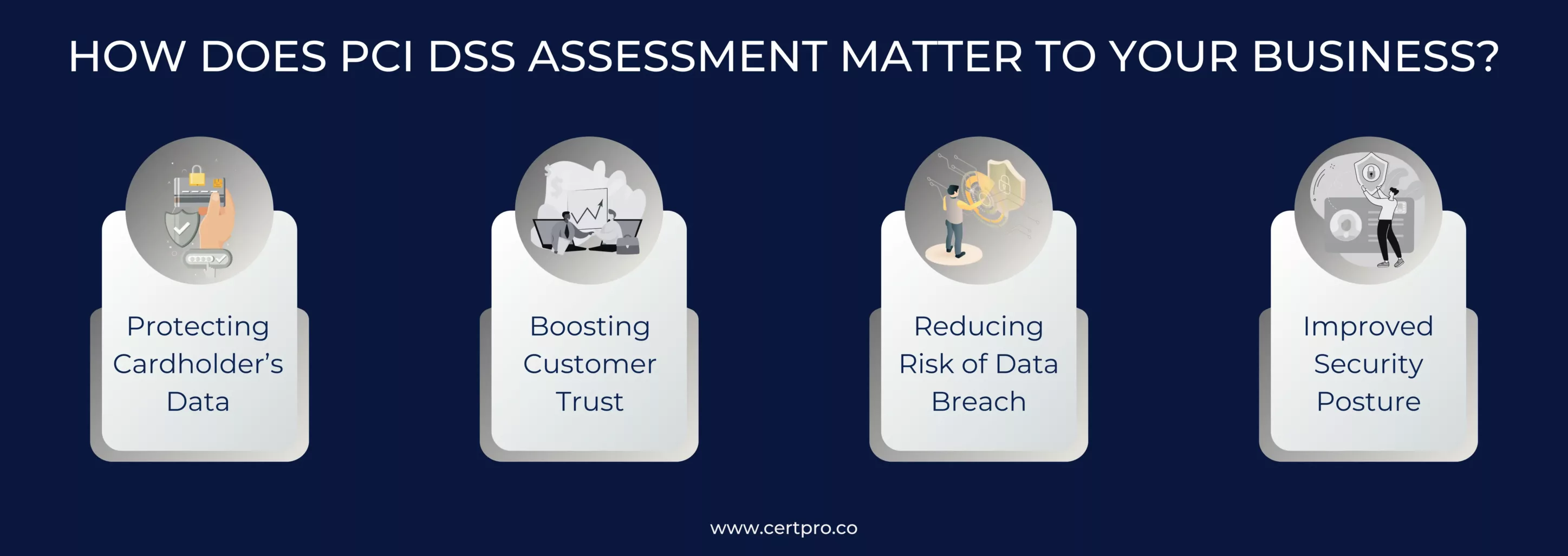
WHAT IS NECESSARY FOR PCI DSS AUDIT?
If your organization is seeking a PCI DSS audit, it should maintain particular rules and regulations. Some important considerations are:
1. To continue the on-premises audit of your organization’s data security policies and controls, you must hire a QSA who has been PCI DSS verified.
2. It demands an internal auditor with PSI SSC certification to continue the yearly audits.
3. It is important to ensure that the annual audit considers vulnerability scans, control, and penetration testing to ensure the system maintains security and privacy-related issues.
DOES YOUR ORGANIZATION REQUIRE PCI DSS AUDIT?
All service providers handling debit or credit card information should adhere to PCI DSS rules for their organization. The process implements an information security methodology with 12 core considerations and 281 directives.
PCI DSS compliance is essential for merchants, processing over 6 million payment card transactions, and service providers, processing 300,000 card transactions per year. Small merchants handling small amounts of data can perform a Self Assessment Questionnaire (SAQ) and an Attestation of Compliance (AOC). It would be enough for them. Regardless of the size and kind of organization, PCI DSS compliance ensures the risk of data breaches and penalty-related issues for your organization.
HOW DOES A PCI DSS AUDIT WORK FOR YOUR ORGANIZATION?
The auditor’s primary focus is identifying the non-compliance and offering solutions for restoring the process. The final step is recognizing an effective QSA for continuing the audit. Therefore, only QSA is permitted to continue the audit as long as the PCI council verifies it. The auditors will determine the data storage process, environment, procedures, and policies. They organize the whole process and ensure that the data is secured. Therefore, the entire process incorporates the overall changes in the organization and strengthens the data security aspect.
5 STEPS TO GET READY FOR A PCI DSS ASSESSMENT
You can always prepare for something critical; the same is true for your upcoming PCI DSS assessment. Here are 5 steps to help you prepare and excel in your PCI DSS assessment:
1. Conduct a Risk Assessment: PCI DSS aims to provide stronger protection of your customers’ credit card data. But before building any defenses, you must understand the threats you face. Risk assessment is the first step in the PCI DSS assessment. Here’s what objectives you need to aim for to conduct a successful risk assessment:
- Identify the relevant threats and vulnerabilities that may pose risks for your services and assets.
- Detect any insufficiencies in your security measures and track how effectively you address these shortcomings.
- Identify your essential hardware, software, and sensitive data by understanding their risk so you can focus on protecting them first.
2. Record Policies and Procedures: As you have completed your risk assessment and have a clearer picture of your security outlook. Now, it’s time to build your defenses! Policies and procedures are the foundation of any robust security program. These controls are also crucial for meeting PCI DSS requirements. Here’s the action plan:
- Read the latest PCI DSS requirements to ensure your security practices are up-to-date.
- Review your risk assessment to identify which areas of your policies need strengthening.
- Create guidelines for your security vulnerabilities along with complying with PCI DSS standards. Ensure it works smoothly with your current business practices.
3. Bridging the Compliance Gap: The next step is to identify gaps in your compliance. This requires gathering your key stakeholders for a thorough review. This review process includes discussing the potential areas in your business that need help to meet the standard fully. Based on the identified needs, the next thing to consider is allocating the necessary resources, including budget and personnel, for implementing the remediation plan with the support of leadership. Engaging a Qualified Security Assessor (QSA) for a gap analysis can offer valuable insights.
- Review and update security policies to ensure your policies are accurate and aligned with the PCI DSS requirements.
- Perform a routine internal vulnerability assessment to mitigate security shortcomings.
- Partner with an Approved Scanning Vendor(ASV) quarterly to identify potential risks from outside.
- You can have professionals simulate cyberattacks to find weaknesses, but only external vulnerability scans (ASV scans) are required by PCI DSS.
4. Empowering Your Team: Once you have conveyed any security gaps and established clear guidelines, it’s time to equip your team with the knowledge they need to be security champions.
- Train your tech enthusiast employees to operate and monitor implemented security controls proficiently.
- Train your incident response team well to handle security incidents effectively.
- Educate all your staff members on essential security practices, regardless of their technical roles. This includes password hygiene, identifying phishing attempts, and understanding social engineering tactics.
- Use resources like OWASP’s training to learn secure coding practices to build safer software.
5. Maintaining PCI DSS Compliance: Once you’ve implemented controls, addressed security gaps, documented your policies, and trained your team. The final step in the PCI DSS Assessment is maintaining compliance. Think of it like maintaining a healthy lifestyle: consistency is vital.
- Regularly evaluate your security posture to identify and address any emerging vulnerabilities.
- Keep the security committee meetings. These meetings are a platform to discuss security updates, share best practices, and ensure everyone’s on the same page.
- As your business and the threat landscape change, update your security measures to reflect these changes. Think of it as keeping your security software and protocols up-to-date.
The PCI DSS safeguards businesses and reduces the risk of data loss. In addition, it benefited the business in many ways. The first and foremost important thing is to protect the cardholders’ data; the PCI DSS assessment ensures the criteria. It undoubtedly boosts customer confidence in safeguarding sensitive data. Therefore, PCI DSS compliance requires a long security checklist that proactively strengthens security controls and reduces risk.
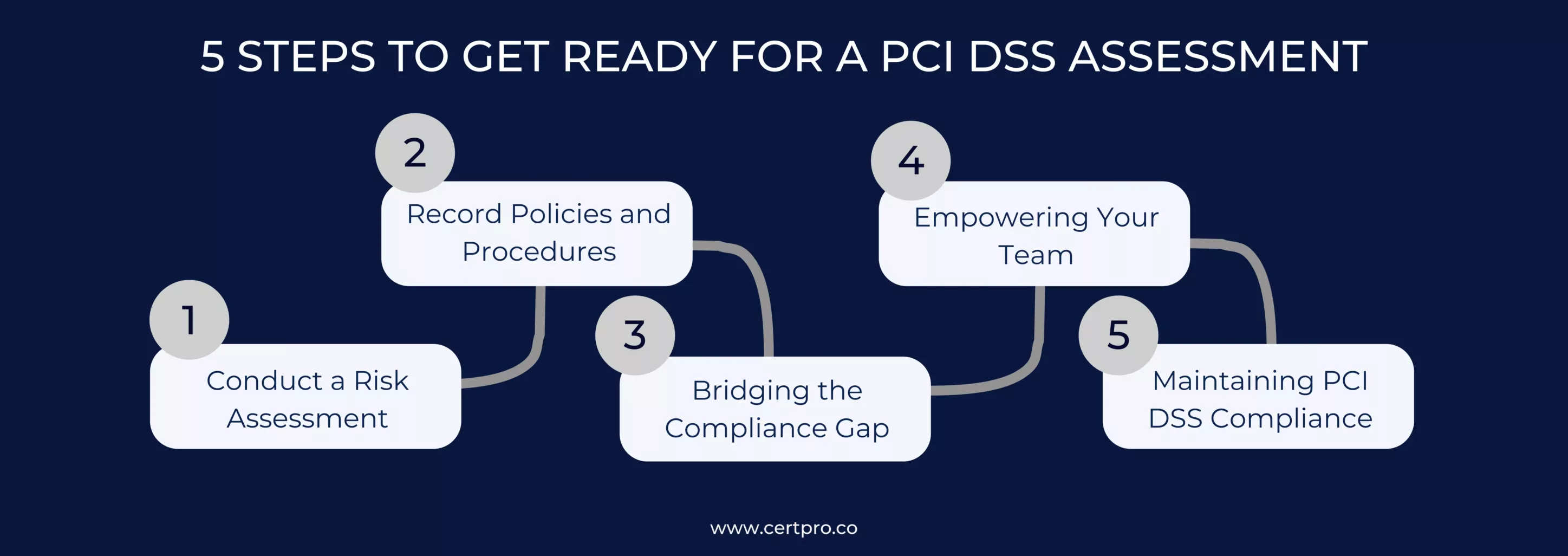
FAQ
Does PCI DSS apply only to credit cards?
No, PCI DSS is not only for credit cards. It applies to all major payment card brands, such as Credit cards, Debit cards and payment cards.
Is PCI DSS mandatory?
Yes, PCI DSS is mandatory for any business that accepts, transmits, or stores payment card information, regardless of size or transaction volume.
What is a PCI violation?
A PCI violation occurs when your organization fails to comply with the Payment Card Industry Data Security Standard (PCI DSS).
How long does a PCI DSS assessment take?
The time for a PCI assessment can vary, but typically takes between a few days and several weeks. This depends on factors like your company size, card transaction volume, and the type of assessment needed.
Is PCI DSS trustworthy for securing data?
It secures customers’ data and improves the company’s reputation. You can apply for a PCI DSS assessment if your company deals with any credit- or debit-related transaction.

About the Author
SUBBAIAH KU
Subbaiah Ku is the Regional Director for CertPro in Oman, bringing a wealth of expertise in process and system auditing. As a seasoned lead assessor, Subbaiah is dedicated to ensuring the highest standards in compliance and security. His unique blend of technical acumen, rooted in Mechanical Engineering, is complemented by a diverse range of certifications and extensive training.
HOW DOES THE NIST CYBERSECURITY FRAMEWORK FUNCTION, AND WHY IS IT IMPORTANT?
Emerging cyber threats make cybersecurity an essential consideration for organizations handling and managing data. In this regard, the NIST cybersecurity framework applies to improving your cybersecurity program. It is a set of guidelines that helps improve your...
UNDERSTANDING ISO 42001: A GUIDE FOR RESPONSIBLE AI MANAGEMENT SYSTEMS
The invention of artificial intelligence (AI) has changed the operational processes of many industries. However, the rapid growth of technology increases ethical, security, and privacy-related concerns. Therefore, the International Organization for Standardization...
EUROPEAN UNION’S ARTIFICIAL INTELLIGENCE ACT: HOW THIS GROUNDBREAKING LAW AFFECTS YOUR BUSINESS
Nowadays, Artificial Intelligence (AI) is transforming our lives exceptionally well. AI is now streamlining healthcare services, providing virtual assistance, and fulfilling queries. Technologies have boons and curses. Similarly, AI creates many concerns about...

